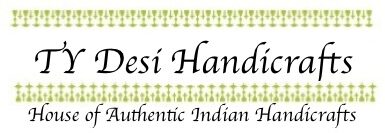- You have no items in your shopping cart
- Subtotal: $0.00
Handicrafts From Kerala – God’s Own Country
Kerala is well known for its articulate craftsmanship and is an intimate part of the tradition. Kerala crafts are mainly linked to traditions, festivals, and rituals observed in the state. Famous products are the wooden face of a Kathakali dancer, miniature boats, Nettipattam, and wooden elephants.
Nettipattam and Kathakali Face
Kerala Nettipattam is a traditional ornament used to adorn elephants during religious processions during the Pooram festival. It can also be used as home decor.
Kathakali is one of the major forms of classical dance in Kerala. It is a “story play” genre of art, distinguished by the elaborately colorful make-up, costumes, and facemasks worn by male actor-dancers. The costumes of Kathakali are marvelous and the face of kathakali is drawn by artists with natural colors and materials. The miniature kathakali face made of rosewood is an excellent depiction of the traditional art and culture of Kerala.
Wood Elephant carving
Kerala is famous for wooden handicrafts and furniture, and wooden elephants are the most popular handicrafts made. Elephants are considered symbols of prosperity and joy and are decorated with ornaments and beautified with paintings on them. People aspired to have real elephants in their homes, but due to a lack of affordability, a miniature wooden elephant is displayed in homes to signify fortune and happiness.
White cedar, rain tree, and rosewood from local forests are used for making wood elephant sculptures. The corrugated paper templates are placed on the block and marked with chalk, pencil, or direct chiseling. Then the sculpture is smoothened and finished with emery paper and sandpaper. Then the elephant is given a timber coat wood finish to fill the minute gaps in the wood. Finally, melamine polish is applied to protect the surface and preserve the appearance.
Miniature Kettuvallom houseboat of Kerala
Traditional houseboats are huge, slow-moving barges used for leisure trips. They are a reworked model of Kettuvallams (in the Malayalam language, kettu means “tied with ropes”, and vallam means “boat”), which, in earlier times, were used to carry rice and spices through waterways and canals. The houseboats have become a widely recognized symbol of the Kerala backwaters. The handcrafted miniatures of the houseboat are made of rosewood and screw pine.
Raja Ravi Varma – The Famous Indian Royal Painter
Raja Ravi Varma (29 April 1848 – 2 October 1906) was a celebrated Malayali Indian painter and artist. He is considered to be among the greatest painters in the history of Indian art for several aesthetic and broader social reasons. Raja Ravi Varma was closely related to the royal family of Travancore of present-day Kerala. His work is among the best examples of the fusion of European techniques with pure Indian sensibility.
While continuing the tradition and aesthetics of Indian art, his paintings employed the latest European academic art techniques of the day. He was notable for making affordable lithographs of his paintings available to the public, which greatly enhanced his reach and influence as a painter and public figure. His lithographs increased the involvement of common people with fine arts and defined artistic tastes among common people for several decades. In particular, his depictions of Hindu deities and episodes from the epics and Puranas have received profound acceptance from the public and are found across India, often as objects of worship.
Apart from painting Hindu mythological figures, Varma also made portraits of many Indians as well as Europeans. Varma worked on both portrait and landscape paintings and was one of the first to use oil paints. Damayanti Talking to a Swan is the most famous painting of Raja Ravi Varma.
We have a wide range of handicrafts from Kerala including kathakali face, Nettipattam, elephant idols, and mini Kerala boats to enhance your home décor. We also have a few iconic paintings by Raja Ravi Varma which can adorn your living room.

